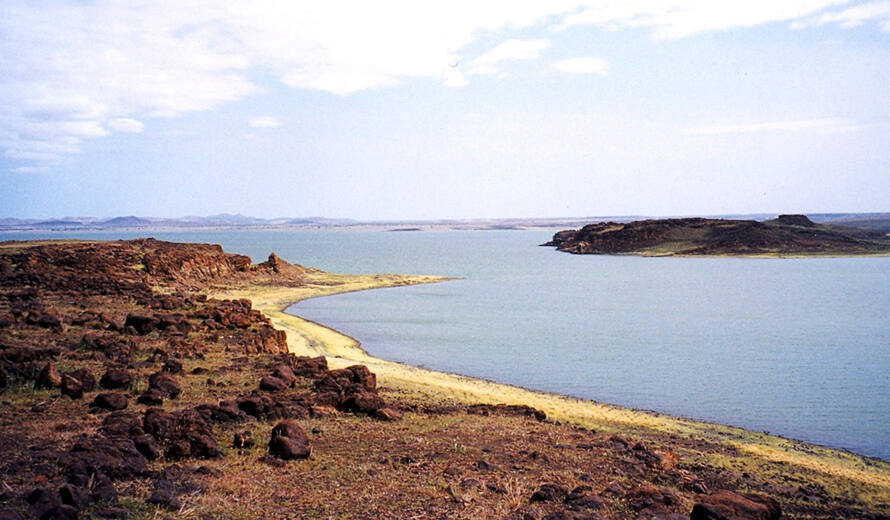 Lake Turkana National Parks constitute of Sibiloi National Park, the South Island and the Central Island National Parks, covering a total area of 161,485 hectares located within the Lake Turkana basin whose total surface area is 7 million ha. It is located on the Kenya’s north bordering with Ethiopia and South Sudan.
Lake Turkana National Parks constitute of Sibiloi National Park, the South Island and the Central Island National Parks, covering a total area of 161,485 hectares located within the Lake Turkana basin whose total surface area is 7 million ha. It is located on the Kenya’s north bordering with Ethiopia and South Sudan.
The Lake is the most saline lake in East Africa and the largest desert lake in the world, surrounded by an arid, seemingly extraterrestrial landscape that is often devoid of life. The long body of Lake Turkana drops down along the Rift Valley from the Ethiopian border, extending 249 kilometers from north to south and 44 km at its widest point with a depth of 30 meters.
The lake is in an enclosed basin in an environment with extreme aridity, low and poorly distributed rainfall, high evaporation rates and strong southwest winds. The alkaline water body is unique in being the largest permanent desert lake in the world. By volume it is the fourth largest lake in Africa and the largest lake in the eastern arm of the rift Valley.
The lake is the most saline of Africa’s large lakes. Turkana is an outstanding laboratory for the study of plant and animal communities. The three National Parks serve as a stopover for migrant waterfowl and are major breeding grounds for the Nile crocodile, hippopotamus and a variety of venomous snakes.
The Koobi Fora deposits, rich in mammalian, molluscan and other fossil remains, have contributed more to the understanding of paleo-environments than any other site on the continent.
Outstanding Universal Value
The geology and fossil record on and around the lake represents major stages of earth history including records of life represented by hominid discoveries, presence of recent geological process represented by volcanic erosional and sedimentary land forms. This property’s main geological features stem from the Pliocene and Holocene periods (4million to 10,000 years old).
It has been very valuable in the reconstruction of the paleo-environment of the entire Lake Turkana Basin. The Koobi Fora deposits contain pre-human, mammalian, molluscan and other fossil remains and have contributed more to the understanding of human ancestry and paleo-environment than any other site in the world.
The property features diverse habitats resulting from ecological changes over time and ranging from terrestrial and aquatic, desert to grasslands and is inhabited by diverse fauna. In situ conservation within the protected areas includes threatened species particularly the reticulated giraffe, lions and gravy zebras and has over 350 recorded species of aquatic and terrestrial birds.
The Island parks are the breeding habitats of the Nile crocodile, Crocodylus niloticus, the hippopotamus amphibious and several snake species. Furthermore, the lake is an important flyway passage and stopover for palaeartic migrant birds, with the South Island Park also being designated as an important bird area under Birdlife International. The protected area around Lake Turkana provides a large and valuable laboratory for the study of plant and animal communities.
